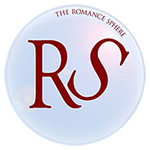
by Antonella Russo
Einaudi, 428 pp., ill., € 35.00
CECELIA OLIVERIO
Though the mere reference to the term “cultural history” is sometimes enough to push even the most tolerant of history buffs toward an apoplectic anxiety, fear not Antonella Russo’s ever so meticulously curated history of photography. For a bricolage of findings on post-World War II Italian photography or an ode to methodological eclecticism this book is most certainly not. Cultural insofar as the rich and nuanced picture of Italian photography that is achieved by Russo is the result of the author’s having diligently sifted through innumerous photography collections contained in Italy’s dizzying archive system, this history is nevertheless a model of methodological rigor and clarity of expression. In other words, Russo’s approach to analyzing and composing a coherent line of argumentation around this bric-a-brac of snapshots, hidden gems and high art is purely historical. Persistence of research, structural clarity and relevance of argumentation are distinctive traits of Russo’s history. In fact, with its overall didactic structure, the text seems perfectly designed for those RISD-type students who spend their afternoons sketching and perusing textbooks in the studio. Not surprisingly, considering that Russo is a preeminent scholar in her field and one of the few researchers and professors of the history of photography in Italy, this work was originally conceived of as a sort of textbook. The result is a book which may be enjoyed by students and experts across a variety of fields—history, photography and other disciplines in the arts and sciences—as well as by the casual reader. The organization of Russo’s book is such that the reader may easily locate and draw out the information which is of greatest interest. The book is divided into ten chapters, which are organized more or less in chronological order, and is preceded by an introduction that neatly and accurately sums up the aims and salient findings of Russo’s project. Russo begins strongly with a chapter in which she proposes reevaluating the neorealist current of photography by departing from the “limits, aporiae and gaps” of a definition which is no longer applicable. As a result, Russo takes a very structured approach toward the question, to the extent that she circumscribes neorealist photography within the brief period running between 1940 and 1949. Despite Russo’s best efforts to gain a sense of this strangely elusive neorealist form, by chapter’s end it is clear that the issue is trailed by a few loose ends and that there remain a handful of split-seams to be mended. For this reason, the first chapter is more of an invitation to further exploration of the book and of the topics therein discussed than a prelude to conclusion. Other topics discussed by Russo include the role and activity of photographic associations in Italy, the rise of history of photography as an officially recognized discipline, and the amateur practice of photography. Just as compelling as the written text is the eye-catching array of illustrative examples. While Russo’s clear and engaging prose is impressive and worthy of note, the stunning collection of images—the fruit of Russo’s archive expeditions—strikes even more immediately. In sum, for the art loving would-be time traveler of any age, Russo’s book is a precious capsule of more than half a century’s worth of Italian photographic culture. If only for the amount of effortless pleasure which Russo’s work provides the reader, Storia culturale della fotografia italiana is pure gold.
